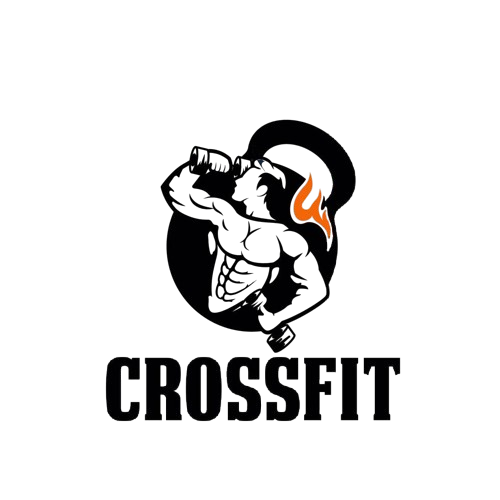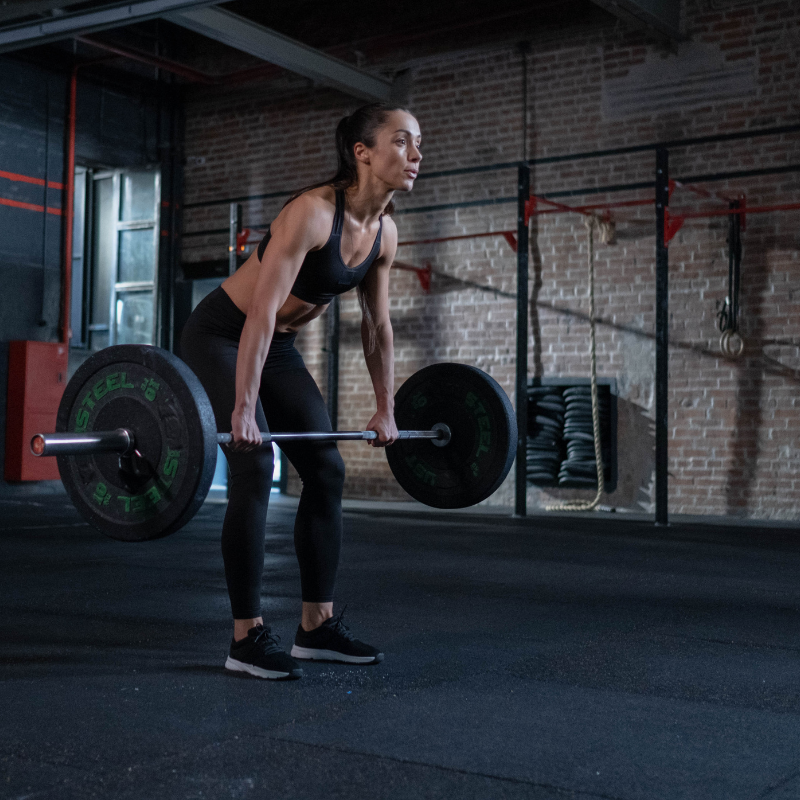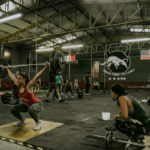What is CrossFit, you may wonder? It’s more than just a fitness regimen; it’s a lifestyle embraced by millions globally. This dynamic and versatile training method has redefined what it means to be fit, merging strength, agility, and endurance into a cohesive workout experience. Whether you’re a seasoned athlete or someone looking to revolutionize your fitness journey, understanding CrossFit could be the game-changer you’re seeking. Dive into the world of CrossFit and discover how it challenges the conventional norms of exercising.
The Origins of CrossFit
The genesis of CrossFit traces back to the late 20th century, specifically to the year 2000, when Greg Glassman, a former gymnast turned fitness trainer, founded the company. The inception of CrossFit was not just the birth of a new fitness regimen but a paradigm shift in the approach to personal health and exercise. Glassman’s unique perspective on fitness was derived from his extensive experience in coaching and his dissatisfaction with the traditional gym culture, which he found to be ineffective and monotonous.
At its core, CrossFit was conceived as a program that emphasizes strength and conditioning through highly varied and high-intensity functional movements. The idea was to create a fitness protocol that could cater to individuals of any age or fitness level, focusing on enhancing physical prowess across multiple domains such as stamina, strength, flexibility, power, speed, coordination, agility, balance, and accuracy. This holistic approach was revolutionary at the time, challenging the prevailing norms of fitness that were largely isolated to specific disciplines like bodybuilding or aerobic exercises.
The early days of CrossFit saw it being adopted by law enforcement and the military for its effective and comprehensive approach to fitness training. This endorsement by such physically demanding professions helped to cement CrossFit’s reputation as a robust and versatile fitness program. It wasn’t long before the methodology began to spread to the general public, where it quickly gained popularity for its community-centric approach, as well as its scalability and adaptability to individuals’ varying fitness levels. Today, CrossFit has grown into a global phenomenon, with thousands of affiliated gyms, known as “boxes,” and a passionate community of practitioners who testify to its transformative effects on their physical and mental well-being.
- Introduction of CrossFit to the fitness world by Greg Glassman in 2000.
- Originated from Glassman’s dissatisfaction with traditional gym culture and ineffective training methods.
- Adoption by law enforcement and military for its comprehensive fitness approach.
- Spread to the general public, gaining popularity for its community-centric and scalable program.
- Global expansion to thousands of affiliated gyms and a widespread, dedicated community.
CrossFit’s Core Principles
CrossFit, a high-intensity fitness program that incorporates elements from several sports and types of exercise, is founded on core principles that aim to optimize physical competence in ten recognized fitness domains: cardiovascular and respiratory endurance, stamina, strength, flexibility, power, speed, coordination, agility, balance, and accuracy. These principles are not just the backbone of CrossFit; they are the guiding stars that ensure its practitioners, known as athletes, engage in a comprehensive regimen that prepares them for any physical challenge.
The first of these principles is variability. CrossFit workouts are famous for their dynamic nature, rarely repeating the same routines. This unpredictability challenges the body and mind in every session, promoting rapid improvements in overall fitness. By constantly changing workouts, the risk of plateauing is minimized, and all muscle groups are engaged over time, ensuring balanced development.
Another key principle is the emphasis on functional movements. CrossFit prioritizes movements that are natural, safe, and effective, reflecting the kind of physical activity humans were designed for. These include pushing, pulling, squatting, lifting, and running. The idea is to prepare athletes for real-life scenarios, enhancing not just their athletic performance but also their capability to perform everyday tasks more efficiently.
The third foundational principle is intensity. In CrossFit, intensity is considered the key variable in eliciting adaptation and progress. Workouts are designed to push athletes to their limits, but within the bounds of their individual capabilities. This principle is rooted in the belief that the level of effort dictates the level of benefits gained from each workout. Hence, CrossFit workouts are scalable to the fitness level of any individual, making it accessible to everyone from elite athletes to beginners.
Behind these principles lies the community aspect of CrossFit, which, while not often listed among its core tenets, plays a crucial role in an athlete’s journey. The camaraderie and support found in CrossFit gyms worldwide encourage consistency, accountability, and a positive mindset towards fitness and health.
- Variability – Ensuring workouts remain dynamic and engaging.
- Functional Movements – Prioritizing natural and effective exercises.
- Intensity – Tailoring the effort to match personal fitness levels for optimal growth.
- Scalability – Making workouts accessible to all levels of fitness.
- Community – Building a supportive environment that fosters growth and development.
Understanding CrossFit’s core principles offers insight into why it’s more than just a workout regime—it’s a lifestyle that champions improvement, adaptability, and resilience. Whether you’re looking to enhance your physical fitness, find a supportive community, or challenge yourself in new ways, CrossFit provides a holistic approach to health that goes beyond the gym. By embracing its core tenets, athletes can unlock their potential, achieving not just physical prowess but a balanced and fulfilling life.
Typical CrossFit Workouts Explained
CrossFit, a high-intensity fitness program, blends elements from various sports and types of exercise to forge a comprehensive approach to fitness. At its core, CrossFit aims to prepare its participants for any physical challenge through varied, functional movements executed at high intensity. While the program’s diversity is one of its strengths, certain workouts, known as “WODs” (Workouts of the Day), have gained popularity due to their effectiveness and the benchmark they set for measuring progress.
A quintessential aspect of CrossFit is its scalability, which allows individuals at all fitness levels to participate. Workouts often involve bodyweight exercises, Olympic weightlifting, plyometrics, powerlifting, gymnastics, calisthenics, strongman exercises, and high-intensity interval training (HIIT). A typical session might include a warm-up, a skill development segment, the high-intensity WOD, and a period for stretching or cool down. Despite this structure, the content of each segment is highly variable, ensuring that workouts remain challenging and engaging.
Here are a few examples of typical CrossFit workouts, illustrating the program’s diversity and adaptability:
- The “Fran” – Consists of a thruster (a front squat combined with a push press) and pull-ups, completed in a 21-15-9 rep scheme.
- The “Murph” – A tribute workout that includes a 1-mile run, 100 pull-ups, 200 push-ups, 300 squats, followed by another 1-mile run, all performed while wearing a weighted vest.
- The “Cindy” – Involves completing as many rounds as possible (AMRAP) in 20 minutes of 5 pull-ups, 10 push-ups, and 15 squats.
- The “Grace” – Comprises 30 clean and jerks for time, showcasing the program’s emphasis on Olympic weightlifting techniques.
- The “Annie” – Contains double-unders and sit-ups in a descending rep scheme of 50-40-30-20-10, highlighting the program’s use of high-intensity cardio and core strengthening exercises.
Understanding these workouts provides insight into CrossFit’s philosophy and methodology. The program’s emphasis on functional movements performed at high intensity across varied disciplines ensures comprehensive physical development. Whether your goal is to improve cardiovascular health, increase strength, enhance flexibility, or simply maintain a healthy lifestyle, CrossFit offers a dynamic and supportive environment to achieve these objectives. However, it’s crucial to approach these workouts with caution, especially for beginners, and to prioritize proper form and technique to prevent injury. With dedication and the right guidance, CrossFit can be a powerful tool in unlocking one’s physical potential.
The CrossFit Community and Culture
CrossFit is more than just a high-intensity fitness regimen; it’s a vibrant culture and a welcoming community that unites individuals around the globe. At the heart of CrossFit is the idea of camaraderie and mutual support. Participants, often referred to as athletes, come from diverse backgrounds but share a common goal: to push their physical and mental limits. This shared objective fosters a strong sense of belonging and an environment where encouragement and motivation flourish.
One of the defining characteristics of the CrossFit culture is its inclusivity. Regardless of age, fitness level, or experience, everyone is welcomed with open arms. It’s a place where newcomers can work side by side with seasoned athletes, each pursuing their personal best. This inclusive atmosphere is crucial for fostering a space where individuals feel valued and supported in their fitness journeys. Moreover, the emphasis on community-driven events, such as the CrossFit Games, local competitions, and charity workouts, further cements the bonds among participants. These events not only serve as a testament to the physical achievements of the athletes but also highlight the communal spirit that is integral to CrossFit.
Another hallmark of the CrossFit community is the emphasis on continuous improvement and education. Coaches and athletes alike are always learning, sharing knowledge, and refining their skills. This culture of ongoing development ensures that CrossFit remains dynamic and responsive to the needs and aspirations of its community. Whether it’s mastering a new technique, achieving a personal record, or simply completing a daily workout, every achievement is celebrated. This collective celebration of progress, no matter how small, is a powerful motivator and an essential component of the CrossFit ethos.
Below is a table showcasing some key aspects of the CrossFit community and culture:
| Aspect | Description | Impact on Members |
|---|---|---|
| Inclusivity | Welcoming individuals of all fitness levels and backgrounds. | Creates a supportive and diverse environment. |
| Community Events | Hosting competitions, charity workouts, and social gatherings. | Strengthens bonds and fosters a sense of belonging. |
| Continuous Improvement | Emphasis on personal growth, learning, and skill development. | Encourages members to pursue and celebrate their progress. |
| Coaching Support | Access to knowledgeable coaches providing guidance and motivation. | Ensures safe practice and helps athletes reach their potential. |
| Shared Goals | Uniting members through common objectives in fitness and beyond. | Builds camaraderie and mutual support among athletes. |
Ultimately, the CrossFit community and culture are about more than just exercise. They embody a lifestyle that values health, strength, and mutual support. This unique blend of competition and camaraderie creates a compelling and enriching experience for its members, making CrossFit not just a workout, but a way of life. Whether you’re a seasoned athlete or just beginning your fitness journey, the CrossFit community welcomes you to join in, push your limits, and discover what you’re truly capable of.
CrossFit Competitions and Events
At the heart of the CrossFit community, competitions and events stand as a testament to the dedication, strength, and camaraderie of its members. These gatherings are not just about showcasing physical prowess but also about celebrating personal progress and community bonds. From local box throwdowns to the global stage of the CrossFit Games, athletes of all levels come together to push their limits, share strategies, and inspire each other.
One of the most compelling aspects of CrossFit competitions is their ability to level the playing field. Events are meticulously designed to test a wide range of fitness domains, including strength, endurance, agility, and speed. This ensures that no single athlete’s specialty can dominate the competition, making every event unpredictable and exciting. Moreover, the inclusion of scaled divisions means that even beginners can participate, making competitions accessible to all.
The pinnacle of CrossFit competition is undoubtedly the CrossFit Games. This annual event attracts the world’s elite athletes, all competing for the title of “Fittest on Earth.” The Games are renowned for their grueling challenges, which are kept secret until just before the event, adding an element of suspense and strategy. However, beyond the elite level, there are countless local and regional competitions where the spirit of CrossFit shines just as brightly, showcasing the community and inclusivity that are core to its philosophy.
- Local Box Competitions
- Online Qualifiers
- Regional Competitions
- The CrossFit Open
- The CrossFit Games
CrossFit competitions and events serve as a powerful reminder of the sport’s inclusive ethos and its emphasis on personal improvement. Whether you’re a seasoned athlete aiming for the top or a newcomer looking to set personal records, there’s a place for you in the CrossFit competition scene. It’s an opportunity not just to test your fitness but to become part of a global community that values strength, endurance, and resilience.
CrossFit Nutrition and Lifestyle
The CrossFit lifestyle extends beyond the walls of the gym, embedding itself deeply into the nutrition and daily habits of its adherents. At its core, CrossFit promotes a diet that is high in lean proteins, vegetables, nuts, and seeds, while minimizing processed foods, sugars, and starches. This nutritional strategy is not just about fueling the body for the day’s workout but about optimizing overall health, performance, and recovery.
Adopting the CrossFit lifestyle means making conscious choices about what you eat, how you sleep, and how you manage stress. Nutrition plays a pivotal role in achieving the high level of fitness that CrossFit athletes strive for. The diet recommended for CrossFitters is designed to be sustainable and balanced, ensuring that individuals receive the necessary vitamins, minerals, and macronutrients to support their training regimen. Sleep and recovery are equally important, with emphasis on getting enough rest to allow the body to repair and grow stronger.
Moreover, the CrossFit community often emphasizes the importance of hydration, recommending that individuals drink plenty of water throughout the day to maintain optimal performance levels. The lifestyle encourages regular, varied physical activities that challenge the body in different ways, promoting adaptability and resilience. By integrating these principles, CrossFitters not only excel in their workouts but also enhance their overall quality of life.
| Nutrient | Recommended Daily Intake | Examples |
|---|---|---|
| Protein | 1.2-2.0g per kg of body weight | Chicken, Fish, Legumes |
| Carbohydrates | 3-5g per kg of body weight | Sweet Potatoes, Oats, Fruits |
| Fats | 20-35% of total daily calories | Avocado, Nuts, Olive Oil |
| Water | 3 liters for men, 2.2 liters for women | Water, Herbal Teas |
| Vitamins & Minerals | Varies by specific nutrient | Leafy Greens, Nuts, Dairy |
Scaling and Modifications in CrossFit
CrossFit is a fitness regimen that epitomizes the principle of inclusivity and adaptability, making it suitable for individuals at any level of fitness. The core essence of CrossFit involves performing varied functional movements at high intensity. However, the intensity and complexity of the workouts can be daunting for beginners or those with physical limitations. This is where scaling and modifications come into play, ensuring that CrossFit is accessible and beneficial for everyone. Scaling allows athletes to adjust the weight, volume, or intensity of a workout, while modifications can be made to the movements themselves to accommodate individual needs and goals.
One of the foundational beliefs in CrossFit is that every individual has the potential to improve their health and fitness, regardless of their starting point. Scaling and modifications are not seen as compromises but as essential tools to achieve this inclusivity. For example, if a workout prescribes heavy weightlifting, a beginner might reduce the weight (scaling the load) or substitute it with a simpler movement that targets the same muscle groups (modifications). This approach ensures that all participants can safely and effectively participate in the day’s workout, progressing at their own pace.
Moreover, scaling and modifications are not static. As individuals progress in their CrossFit journey, the degree of scaling and the types of modifications will evolve. This dynamic adjustment fosters a continuous growth mindset, challenging athletes to incrementally increase their capacity while maintaining the integrity of the workout. Coaches play a crucial role in guiding participants through this process, ensuring that each modification aligns with the athlete’s current fitness level and long-term objectives.
| Element | Scaling Example | Modification Example |
|---|---|---|
| Weightlifting | Reducing the weight | Using dumbbells instead of a barbell |
| Gymnastics | Decreasing the number of repetitions | Substituting pull-ups with ring rows |
| Cardio | Shortening the distance | Replacing running with rowing |
| High-Intensity | Lowering the overall intensity | Modifying burpees to step back instead of jump |
| Complex Movements | Breaking the movement into component parts | Practicing with a PVC pipe before using a weighted bar |
Understanding the rationale behind scaling and modifications in CrossFit provides additional insights into the program’s foundational philosophy. It underscores the commitment to making fitness universally attainable, emphasizing personal progress and community support over competition with others. Through these adjustments, CrossFit fosters an environment where every participant, regardless of their fitness level, can work towards their personal health and fitness goals in a safe, supportive, and challenging environment.
In conclusion, scaling and modifications are indispensable aspects of CrossFit, embodying the program’s inclusive and adaptive nature. They ensure that every workout is accessible to individuals of all fitness levels, encouraging continuous personal improvement and fostering a supportive community. As participants progress in their fitness journey, the role of scaling and modifications in facilitating this growth cannot be overstated. CrossFit’s adaptability through these practices is a testament to its effectiveness as a comprehensive fitness regimen.







